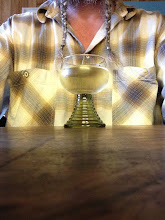Advice to students in four paragraphs:
'Follow up the first Loos quote on architects ruining the landscape by trying too hard with a second, which goes something like 'only a small percentage of architecture, the tomb and the monument, belongs to art' and then ponder both quotes. What Loos might be getting at is that art is one thing, and the pizzeria round the corner quite another. The history of our art in architecture might be displayed in objects such as Michelangelo's Pieta (tomb, or at least the equivalent) or Trajan's column (monument) as significant events, the rest is just culture at large. It comes and goes, mostly goes.
This might lead to a conversation about the significance of cemeteries in general; perhaps Roman Catholic cemeteries in particular. Can they be seen as cities in themselves, or at least analogous to cities? Certainly if they are, they are cities full of art (tombs and monuments). Certainly cemeteries are also eerie places, without pizzerias, without even birds singing.
Fortuitously then, for Aldo Rossi, recognising a certain 'death' of architecture, the cemetery seems an appropriate project. What does he do? Well to my eyes he seems to assemble a series of eerie relics of the city (including that arcade, which of course is an ancient stoa, and the tower, which is not unlike a renaissance palace). Of course he has to be practical too, to fulfil a brief, but in his mind he has this notion of brokenness, of fracture, loss and - indeed- that famous car accident that immobilised him in hospital for a good while. NB: Rossi was an unlucky driver, he died in a car crash too.
Meanwhile Rossi's assemblage, when complete, is struck by an all too real event, an earthquake, and, as if proving his point, is now closed. In this way, what might be considered a rather melodramatic architectural work becomes rather more profound as a poetic statement, in that it has suddenly gone the way of the pizzeria.'



No comments:
Post a Comment